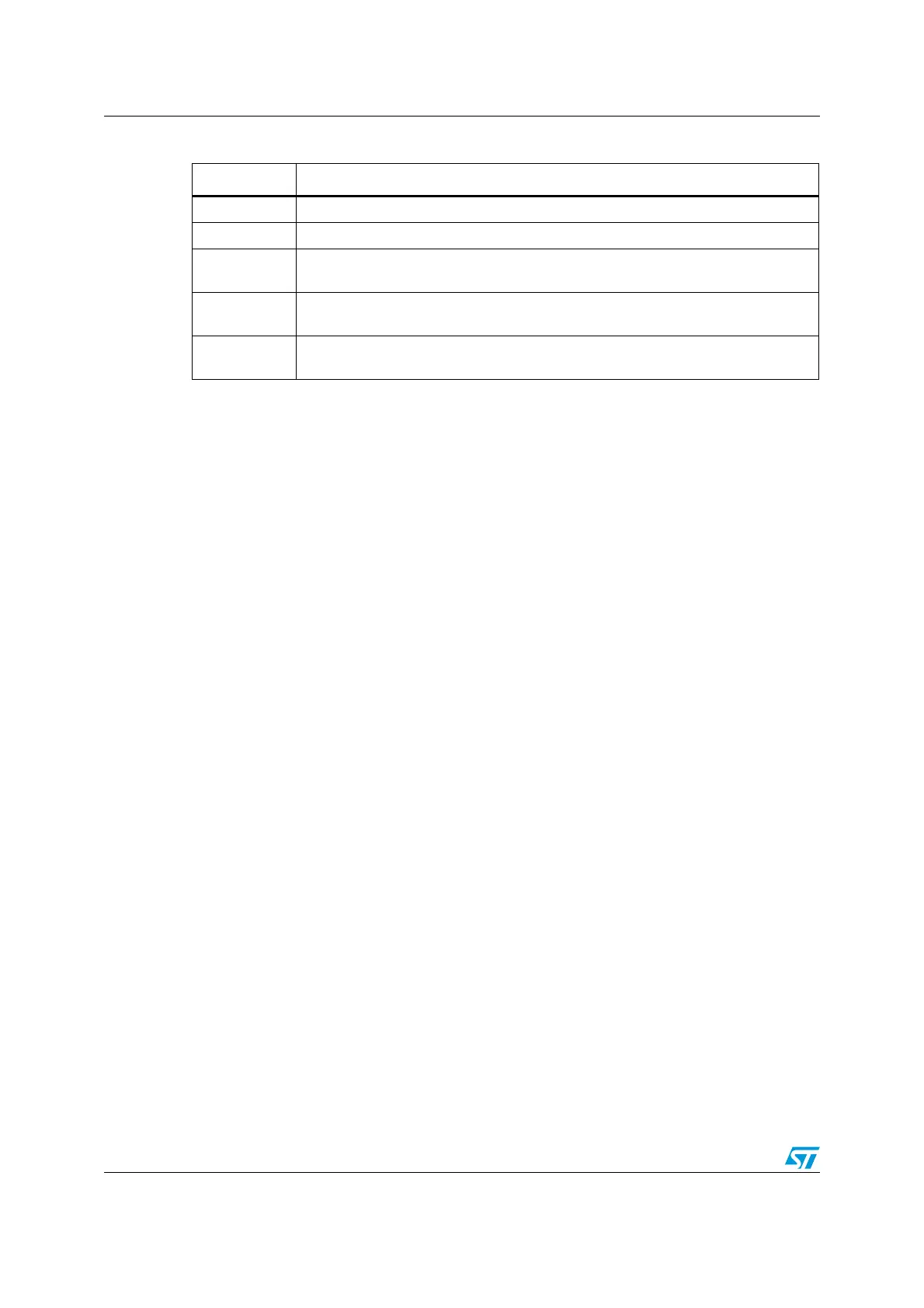SDIO interface (SDIO) RM0008
426/690
19.3.2 SDIO AHB Interface
The AHB interface generates the interrupt and DMA requests, and accesses the SDIO
adapter registers and the data FIFO. It consists of a data path, register decoder, and
interrupt/DMA logic.
SDIO Interrupts
The interrupt logic generates an interrupt request signal that is asserted when at least one
of the selected status flags is high. A mask register is provided to allow selection of the
conditions that will generate an interrupt. A status flag generates the interrupt request if a
corresponding mask flag is set.
SDIO/DMA Interface: procedure for data transfers between the SDIO and
memory
In the example shown, the transfer is from the SDIO host controller to an MMC (512 bytes
using CMD24 (WRITE_BLOCK). The SDIO FIFO is filled by data stored in a memory using
the DMA controller.
1. Do the card identification process
2. Increase the SDIO_CK frequency
3. Select the card by sending CMD7
4. Configure the DMA2 as follows:
a) Enable DMA2 controller and clear any pending interrupts
b) Program DMA2_Channel4 source address register with memory location base
address and DMA2_Channel4 destination address register with SDIO_FIFO
register address
c) Program DMA2_Channel4 control register (memory increment, not peripheral
increment, peripheral and source width is word size)
d) Enable DMA2_Channel4
5. Send CMD24 (WRITE_BLOCK) as follows:
a) Program the SDIO data length register (SDIO data timer register should be
already programmed before the card identification process)
b) Program the SDIO argument register with the address location of the card where
data is to be transferred
Table 108. Receive FIFO status flags
Flag Description
RXFIFOF Set to high when all 32 receive FIFO words contain valid data
RXFIFOE Set to high when the receive FIFO does not contain valid data.
RXFIFOHF
Set to high when 8 or more receive FIFO words contain valid data. This flag can be
used as a DMA request.
RXDAVL
Set to high when the receive FIFO is not empty. This flag is the inverse of the
RXFIFOE flag.
RXOVERR
Set to high when an overrun error occurs. This flag is cleared by writing to the SDIO
Clear register.

